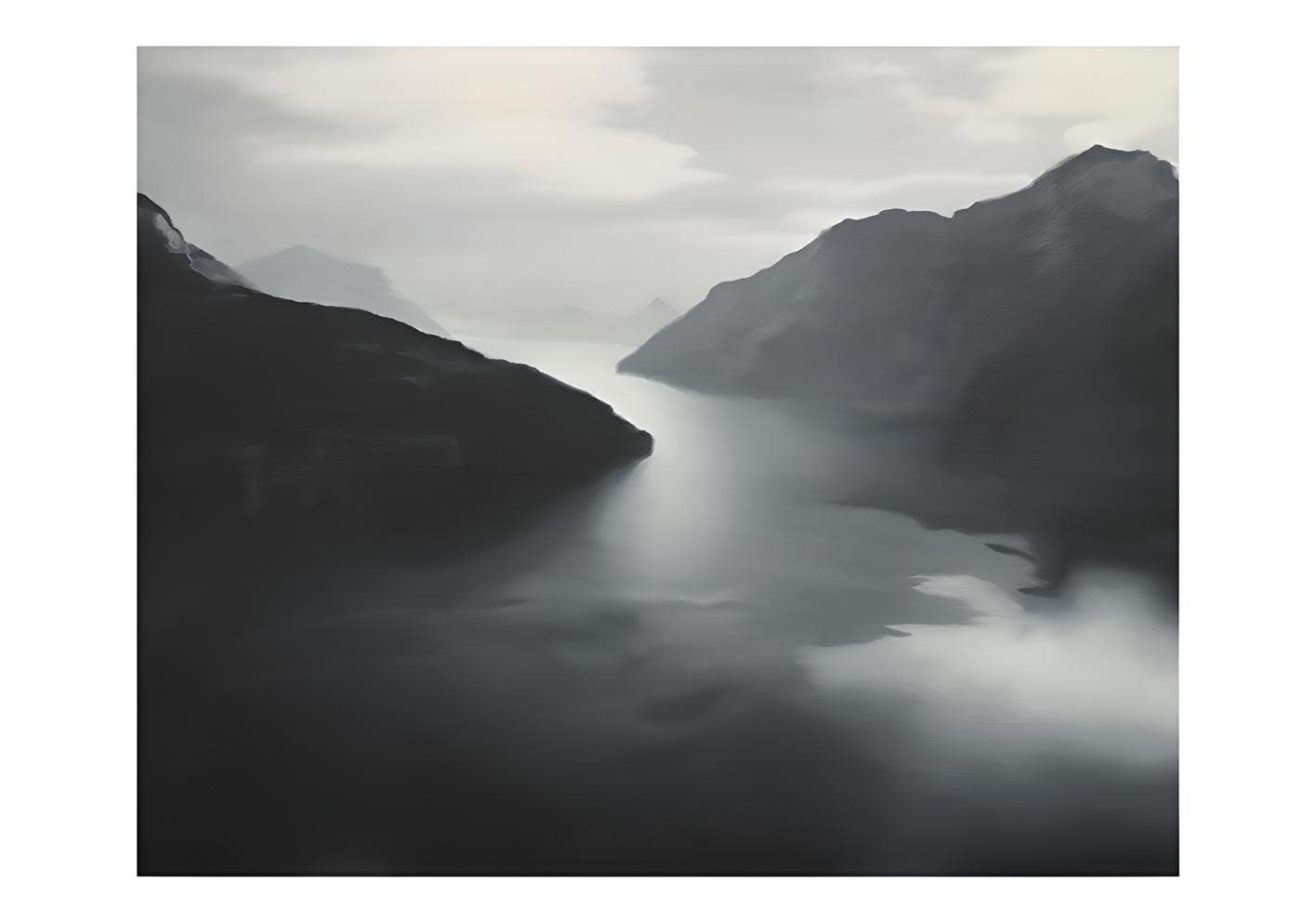Gerhard Richter DE, b. 1932
Vierwaldstätter See, 1969-2023
5-colour hybrid print on 260g Rives handmade paper
Accompanied by a Certificate of Authenticity
Accompanied by a Certificate of Authenticity
100 x 70 cm
© Gerhard Richter
'Vierwaldstätter See' epitomises Gerhard Richter's relationship between photography and painting. The artwork depicts Lake Lucerne in Switzerland, showcasing the artist's distinctive technique of blurring photorealistic images. His inspiration for this...
'Vierwaldstätter See' epitomises Gerhard Richter's relationship between photography and painting. The artwork depicts Lake Lucerne in Switzerland, showcasing the artist's distinctive technique of blurring photorealistic images. His inspiration for this piece stems from his fascination with landscapes, which began in 1968 and is evocative of the German Romantic tradition, particularly the works of Caspar David Friedrich.
The technique employed in 'Vierwaldstätter See' involves Richter's characteristic method of projecting a photograph onto canvas and then painting it with meticulous detail, only to blur the image deliberately as an after-effect. This blurring creates a distance between the viewer and the representation, challenging our perception of reality and memory.
Within Richter's oeuvre, this work is part of his ongoing exploration of the tension between realism and abstraction. It represents a pivotal moment in his career when he grapples with the limitations and possibilities of photographic and painterly representation. 'Vierwaldstätter See' is rooted in the post-war era, reflecting Richter's experiences in East and West Germany. Like many of his landscapes, this work invites viewers to contemplate the complex relationship between nature, memory, and representation in the modern world.
The technique employed in 'Vierwaldstätter See' involves Richter's characteristic method of projecting a photograph onto canvas and then painting it with meticulous detail, only to blur the image deliberately as an after-effect. This blurring creates a distance between the viewer and the representation, challenging our perception of reality and memory.
Within Richter's oeuvre, this work is part of his ongoing exploration of the tension between realism and abstraction. It represents a pivotal moment in his career when he grapples with the limitations and possibilities of photographic and painterly representation. 'Vierwaldstätter See' is rooted in the post-war era, reflecting Richter's experiences in East and West Germany. Like many of his landscapes, this work invites viewers to contemplate the complex relationship between nature, memory, and representation in the modern world.
